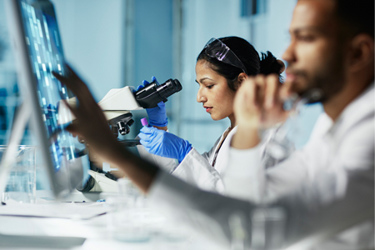Orthogonal Methods To Understand And Define Critical Quality Attributes Of Adeno-Associated Virus (AAV) Therapies

In vivo gene therapy offers the potential to cure previously untreatable diseases with a single injection of a viral vector carrying the gene of interest. Adeno-associated virus (AAV) vectors are the most commonly used delivery vehicle, consisting of capsid proteins designated as VP1, VP2 and VP3, which come together in a 1:1:10 ratio to form an icosahedral structure. The resulting capsid is approximately 20 nm in size with a mass of about 4 MDa.
There are at least 13 different naturally occurring variants or serotypes of AAV, which differ in the types of cells that they infect and thus can be leveraged to better direct the therapeutic gene to a particular tissue. In addition, engineered serotypes offer the possibility to increase the potency and range of cell targets of naturally occurring AAV serotypes.
An essential part of the production of AAV vectors is the characterization of potential critical quality attributes using a range of analytical techniques. Learn about a set of novel, robust, and orthogonal methods that can be used to assess identity, purity, and residuals.
Get unlimited access to:
Enter your credentials below to log in. Not yet a member of Biosimilar Development? Subscribe today.
